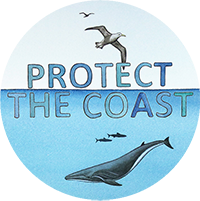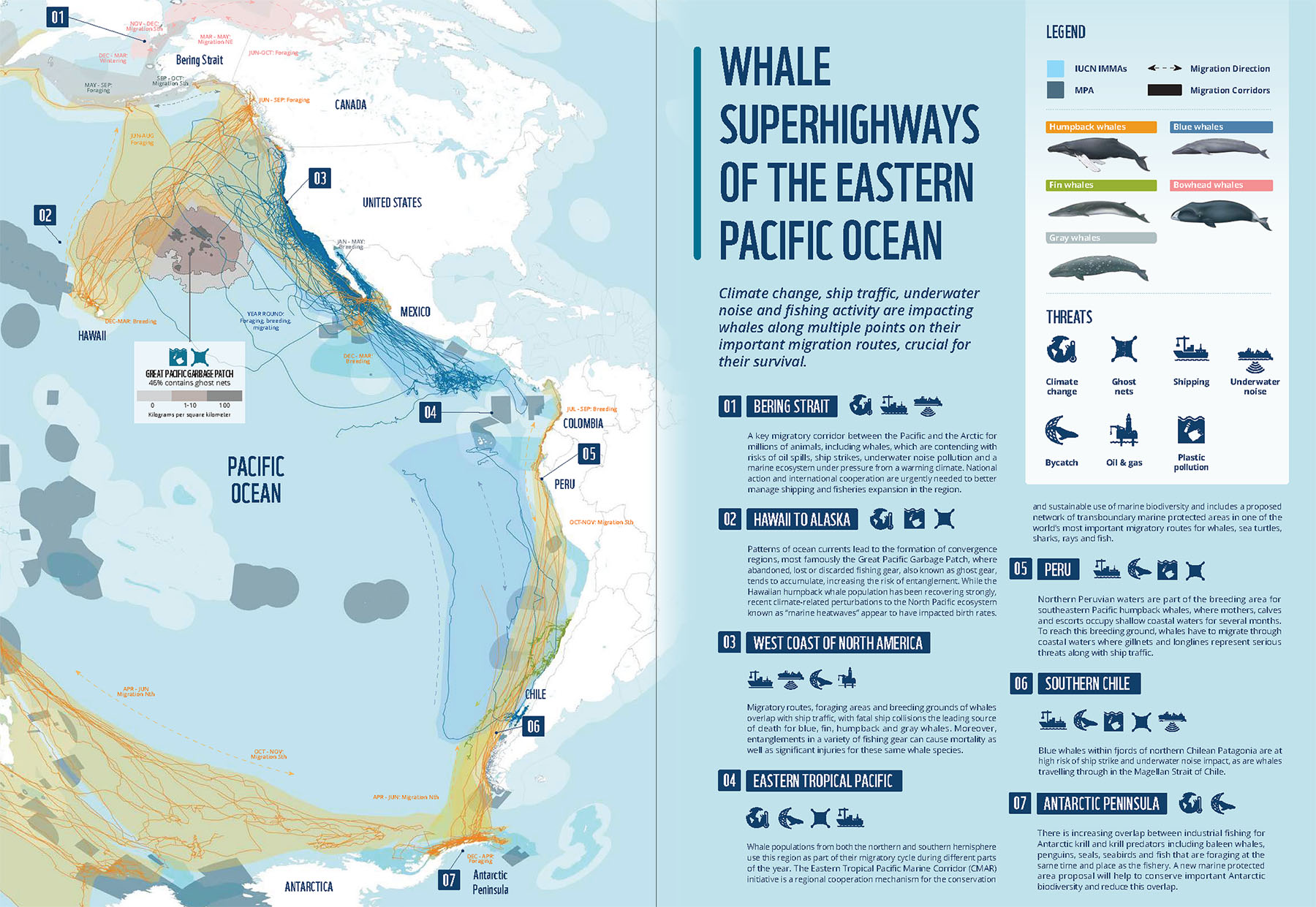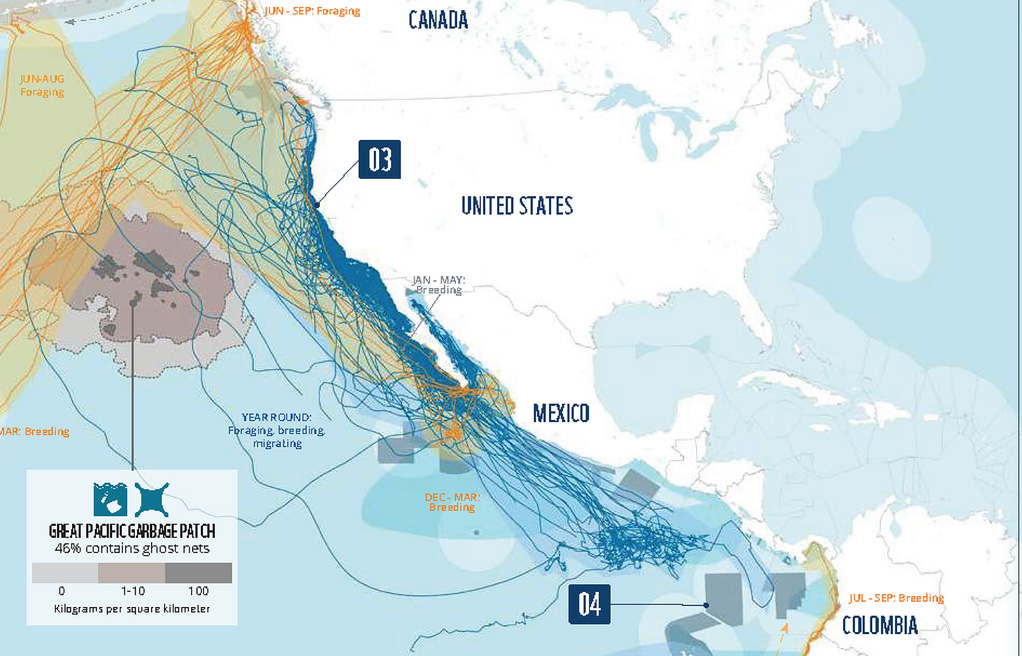Whales and dolphins
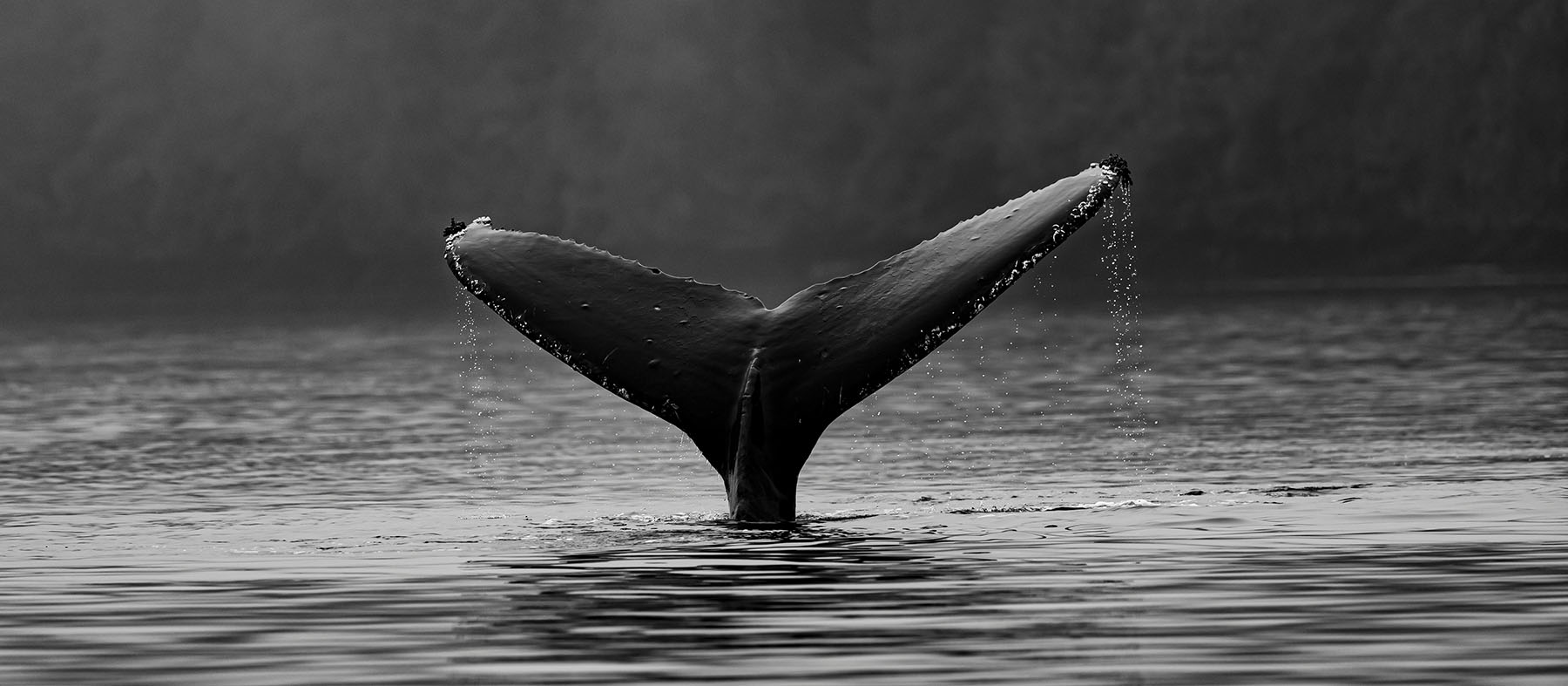
Unsplash
“Whales rely on important ocean areas to feed, mate, give birth, nurse young, socialise and migrate. These areas are being impacted by multiple human activities and are under increasing stress.”
— Chris Johnson, global lead for whale and dolphin conservation at WWF.
Image by World Wildlife Fund. Click to enlarge.
Image by World Wildlife Fund. A closeup of the above map.
There are many whales and dolphins who migrate, feed, mate, and breed along the West coast of the United States, including blue, fin, humpback, gray, and North Pacific right whales. Fatal ship collisions are the leading source of death for whales on the West coast. Ship noise and other anthropogenic noise can interfere with whale communication and hunting. Fishing gear, abandoned from fishing boats and from the Great Pacific Garbage patch also poses a huge threat to whales, and entanglement with fishing gear, mooring lines, and other garbage can easily kill whales.
Increased ship traffic, mooring lines, anchor chains, pollution, and loud noise from floating offshore wind energy areas will all have a large impact on whales already struggling with anthropogenic interference and growing pollution.
Floating offshore wind energy areas are sited in exactly the areas where whales live. Will they become confused from the noise from turbines and be more susceptible to ship strikes? Will they become entangled in mooring lines from floating turbines? No one knows, and yet BOEM is willing to impact the habitat and risk the lives of whales who were driven almost to extinction in previous years. Will offshore wind energy areas impact their recovery? North Pacific right whales are one of the rarest marine mammal species and are critically endangered. Are we willing to risk exterminating this species by continuing and adding to industrial development on the Pacific Coast?
On the East coast, NOAA has authorized over 6,340 incidental whale “take” permits–permits to harm and harass and even kill whales) for offshore wind developers. They issue these permits because they know that whales are directly harmed by offshore industries like wind energy development and increased ship traffic in whale migration and foraging areas.
“Impacts from installed and operating turbines cannot be mitigated. Disturbance to right whale foraging could have population-level effects on an already endangered and stressed species.”
— Sean Hayes, division chief of NOAA’s Northeast Fisheries Science Center.
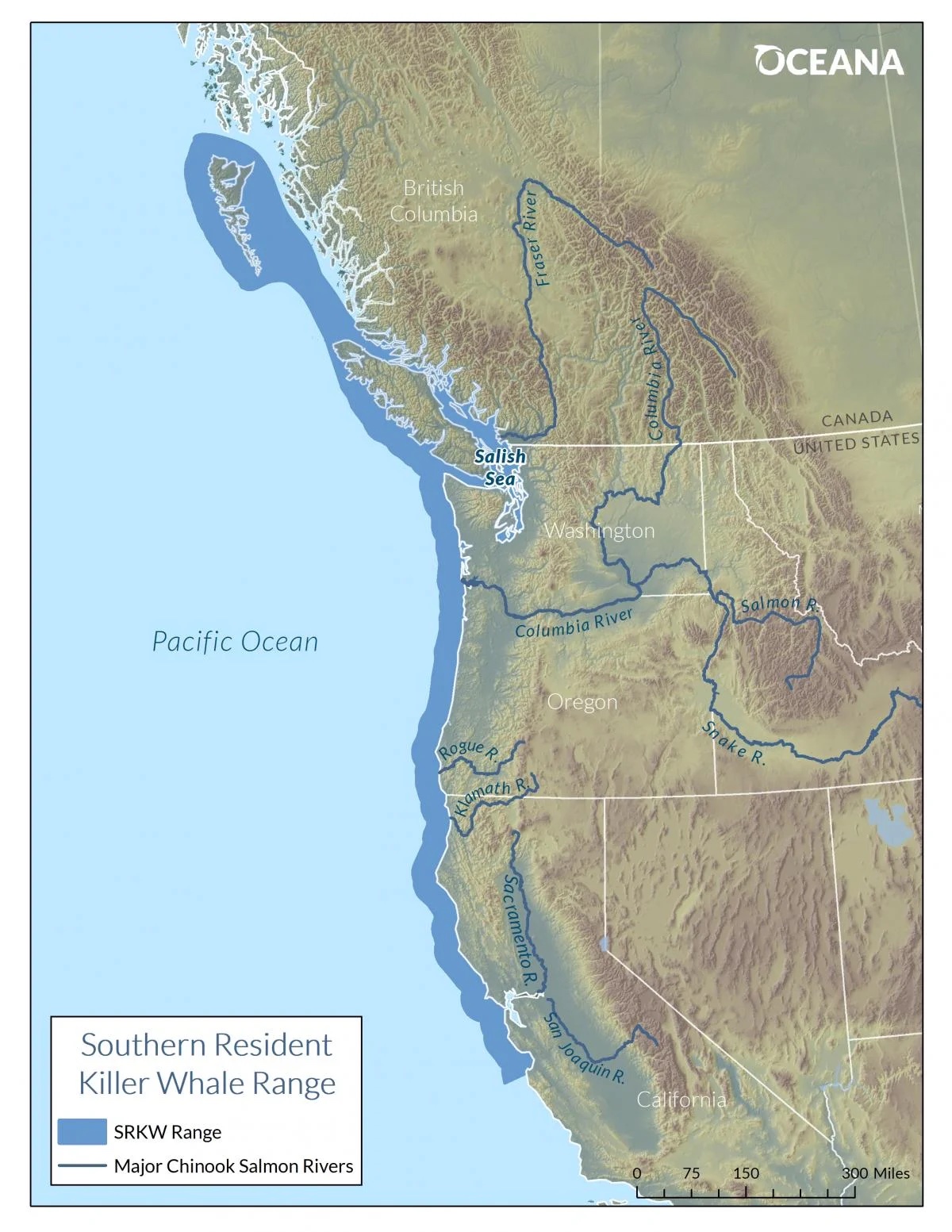
There are multiple dolphin species that swim in the Pacific Ocean off the coast of the United States, including orcas (sometimes called “killer whales”), Pacific white-sided dolphins, long-beaked dolphins, common bottlenose dolphins, and spinner dolphins. Dall’s porpoises and harbor porpoises are also common.
Like whales, dolphins are threatened by entanglement, ship strikes, noise, and pollution.
The Southern Resident Orcas are especially threatened. These orcas are a unique subgroup of orcas with their own language and culture. Their population is down to 74 as of August 2024. The primary threats to these dolphins is decline of chinook salmon, who have been overfished and lost their habitat due to dams in Pacific Northwest rivers, persistent organic pollutants in the water, and vessel noise.
We know that loud noise, particularly low frequency noise, can kill whales and dolphins. Seismic surveys and pile driving for offshore industry creates noise far exceeding that which can kill these mammals. Increased anthropogenic noise in Pacific coastal waters threatens all marine life.
